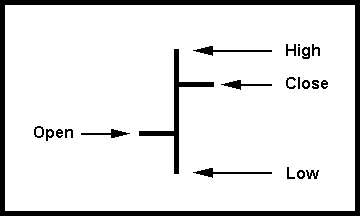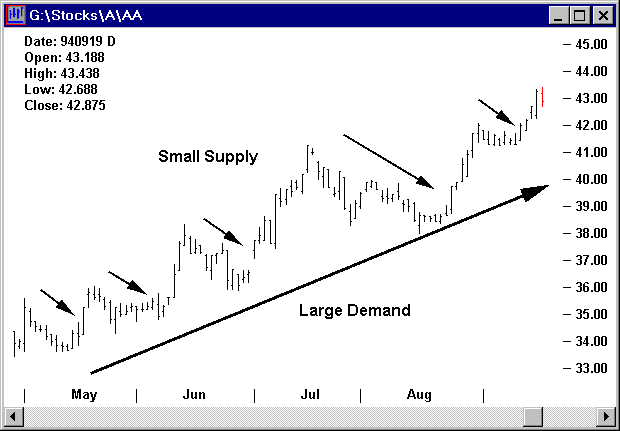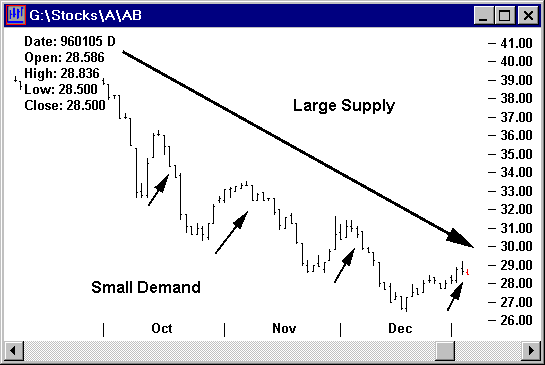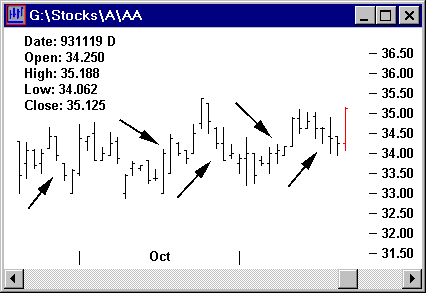The fundamental axiom of technical analysis is that masses of people tend to react in the same way given similar circumstances. In other words, history repeats itself.
In the old style of technical analysis, traders would look at charts to find potential trades. Each bar on a chart represents a single trading day, week, or month, depending on the time period selected. For this discussion, we will assume a daily chart. The highest part of each bar represents the highest price for that particular day, while the lowest point on the bar represents the low for that particular day. The tick on the left hand side of the bar, if available, represents the opening trade of the day, while the tick on the right hand side of the bar represents the close of the day.

Technicians believe that prices for stocks are influenced by the supply and demand for a stock. If the demand is greater than the supply for a stock, the price will rise (the trend of the stock will be up). Conversely, if supply is greater than the demand for a stock, the price will fall (the trend of the stock will be down). If supply and demand are equal, the stock price will stay the same. When this happens, prices are said to be in a trading or consolidation range.
Note the picture below. There is a large demand for this stock, shown by the large arrow. Supply for the stock becomes available for short periods of time, noted by the smaller arrows, but there is not enough supply to meet demand, so the price rises and the trend of the stock is up.

In the next picture, there is a large supply for this stock, shown by the large arrow. Demand for the stock becomes available for short periods of time, noted by the smaller arrows, but there is not enough demand to meet supply, so the price falls and the trend of the stock is down.
 L
L
In the final picture, supply and demand are equal, so the price of the stock is confined to a tight range.

The trick to technical analysis is to find stocks that are just beginning to trend and to stay in them until the trend changes. Investigator can help you with it’s tools and indicators. Unlike the technicians of old, Investigator automates the search for trades, both historically and on your end-of-day quotes. For example, using the top two charts above, you could use Investigator’s Gann Trend Indicator to identify the trend of the stock, and then use Investigator’s Bar Pattern Visual Editor to draw the bar patterns that look like potential entry points for the trade. Combine the bar pattern and Gann Trend indicator to historically test the trade and see the results. Be sure to review the help section on how to find trading systems.